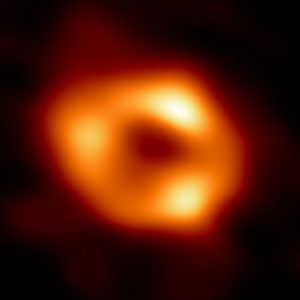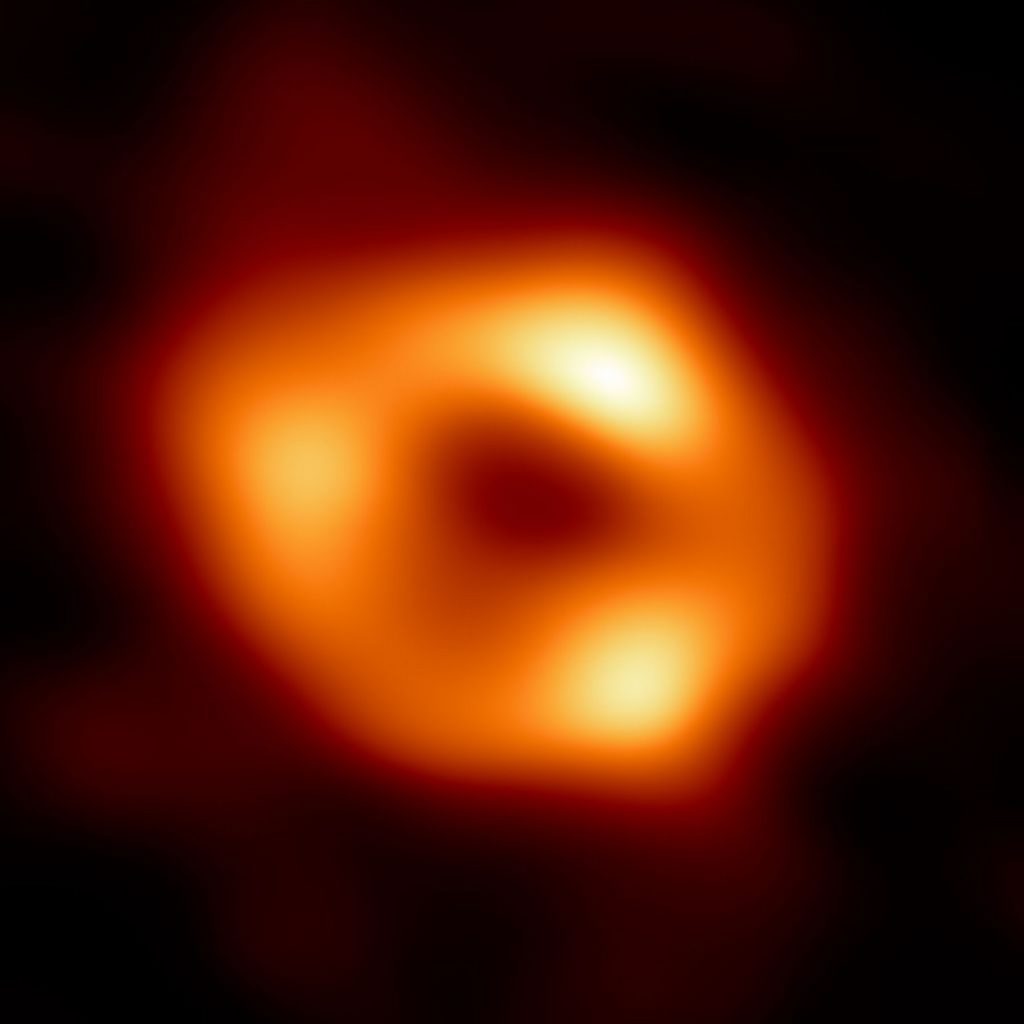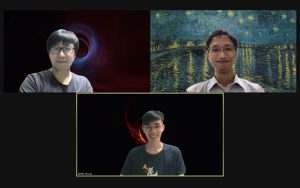CUHK
News Centre
Event Horizon Telescope reveals the first image of the black hole at the Milky Way’s heart
CUHK the only institution in Hong Kong involved in the collaboration
For years, astronomers have long sought to reveal the mystery at the centre of the Milky Way. The Event Horizon Telescope (EHT), an international collaboration, has recently unveiled the first image capturing Sagittarius A* (Sgr A*) sitting at the centre of the Milky Way. The image serves as overwhelming evidence of Sgr A*, with a distance of about 26,000 light-years from Earth and a mass equal to four million times our Sun, being a supermassive black hole. Dr. Po Kin LEUNG, Lecturer, and Mr. Tin Lok CHAN, an undergraduate student, both from The Chinese University of Hong Kong (CUHK)’s Department of Physics, are the only two EHT team members from Hong Kong.
Dr. Leung worked with Professor Chi-Kwan CHAN, Associate Research Professor at the University of Arizona, to study the motion of the gas around the black hole, as well as the mechanism of the infalling of gas near the black hole. He said, “In terms of scientific progress, Sgr A*, the nearest supermassive black hole in our galaxy, is a natural laboratory for us to learn about relativity, gas motion, plasma physics and black hole accretion. In terms of human exploration of the universe, an image of a black hole captures our imagination. The advance of our technology and astronomy provides us with a glance at a black hole, the most extreme environment in the cosmos.”
A black hole is an extremely dense object in space. According to Einstein’s theory of gravity, if the mass of an object is concentrated in a small region, the gravity can be too strong for even light to escape from its boundary, also known as the event horizon. Despite indirect evidence pointing to a supermassive black hole at the centre of our galaxy, astronomers have never been able to observe the galactic black hole directly.
Bringing together more than 300 researchers and engineers around the world, the EHT is the first observation project targeted at capturing black hole images. The image of Sgr A* is the second-ever black hole image in history, after an image of a black hole in a galaxy called M87 published by EHT in 2019. These images capture the “silhouettes” of black holes. The gas around the black hole is bent by its powerful gravity. As a result, the gas falling into the galactic black hole is heated to billions of degrees and emits powerful radiation near the black hole, resulting in a bright, ring-like structure in the images.
One of the difficulties in observing Sgr A* is that it requires a telescope with very high resolution. Since Sgr A* is about 26,000 light-years away from Earth, trying to look at it is like trying to see an apple on the Moon from Earth. In 2017, the EHT coordinated eight radio telescopes around the globe to form a virtual “Earth-sized” telescope to observe Sgr A*. Each radio telescope collects and stores the data simultaneously, and the data are then combined by a supercomputers’ calculation, to form an image of the event horizon of Sgr A*. The process of data integration involves an understanding of physics and sophisticated statistics and error analysis. After five years, the EHT finally released the first-ever image of the black hole at the centre of the Milky Way.
Mr. Tin Lok CHAN, a student who joined the Summer Undergraduate Research Exchange Programme of CUHK, added, “I worked with Dr. Leung on the simulation of gas movement and the mechanism of the infalling of gas around the black hole using supercomputers. Our work contributed to the modelling of the gas motion around the black hole. It is thrilling to work with frontline researchers on this world-first astrophysical research, and help to unravel the mystery of black holes.”

The Event Horizon Telescope (EHT) has recently unveiled the first image of Sagittarius A*. The image captures the “silhouettes” of the black hole. The gas around the black hole is bent by its powerful gravity. As a result, the gas falling into the galactic black hole is heated to billions of degrees and emits powerful radiation near the black hole, resulting in a bright, ring-like structure in the images. Image credit: The Event Horizon Telescope






